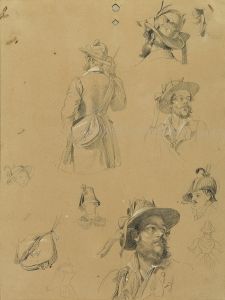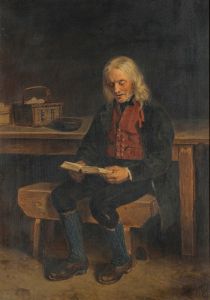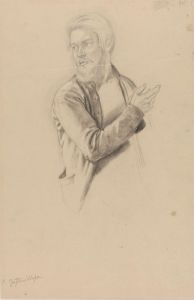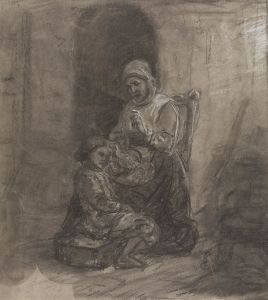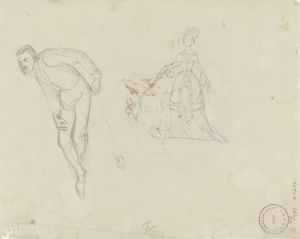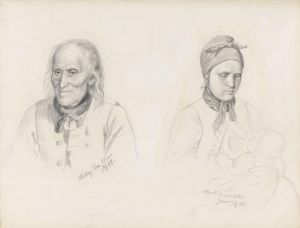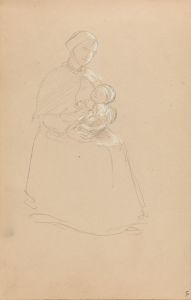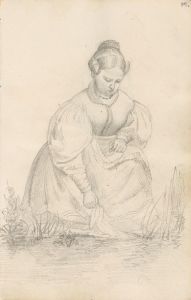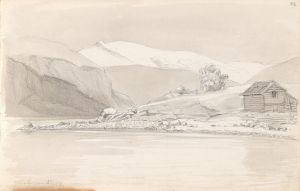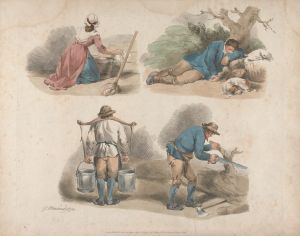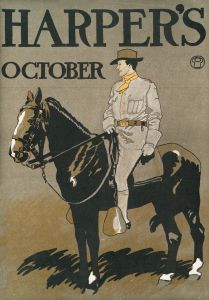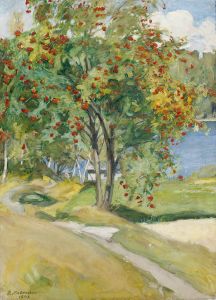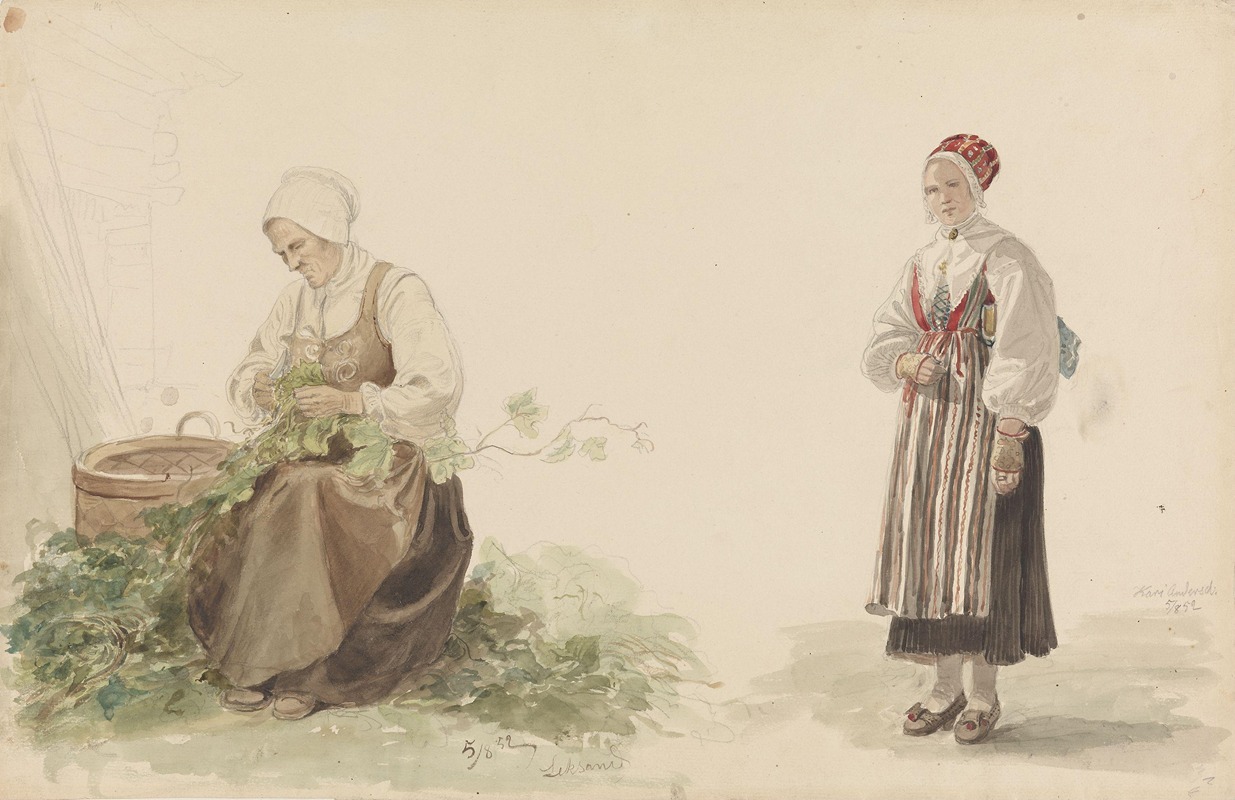
Kone som plukker ekeblader og Kari Andersdatter
A hand-painted replica of Adolph Tidemand’s masterpiece Kone som plukker ekeblader og Kari Andersdatter, meticulously crafted by professional artists to capture the true essence of the original. Each piece is created with museum-quality canvas and rare mineral pigments, carefully painted by experienced artists with delicate brushstrokes and rich, layered colors to perfectly recreate the texture of the original artwork. Unlike machine-printed reproductions, this hand-painted version brings the painting to life, infused with the artist’s emotions and skill in every stroke. Whether for personal collection or home decoration, it instantly elevates the artistic atmosphere of any space.
Adolph Tidemand (1814-1876) was a prominent Norwegian romanticist painter, known for his detailed and evocative depictions of Norwegian folk life and traditions. Among his notable works are "Kone som plukker ekeblader" (Woman Picking Oak Leaves) and "Kari Andersdatter," which reflect his deep interest in the everyday lives of Norwegian people and their cultural heritage.
"Kone som plukker ekeblader" is a painting that captures a moment of rural life, featuring a woman engaged in the simple yet significant task of gathering oak leaves. This work exemplifies Tidemand's ability to portray the dignity and beauty of ordinary activities, highlighting the connection between people and nature. The painting is characterized by its realistic depiction of the woman's attire and the natural surroundings, showcasing Tidemand's skill in rendering textures and details. The use of light and shadow in the painting adds depth and a sense of tranquility to the scene, inviting viewers to appreciate the quiet moments of rural existence.
"Kari Andersdatter" is another significant work by Tidemand, which also focuses on a female subject. This painting is a portrait of Kari Andersdatter, a woman from the Norwegian countryside. Tidemand's portrayal of Kari is marked by a sense of respect and admiration for her character and heritage. The painting captures her in traditional Norwegian clothing, emphasizing the cultural identity and pride of the Norwegian people. Tidemand's attention to detail in the fabric and patterns of her dress, as well as the expression on her face, conveys a sense of individuality and personal history.
Both paintings are part of Tidemand's broader oeuvre, which often explored themes of national identity and the preservation of cultural traditions. His works were instrumental in shaping the Norwegian national romantic movement, which sought to celebrate and preserve the unique aspects of Norwegian culture during a time of growing national consciousness in the 19th century. Tidemand's paintings were well-received in his time and continue to be appreciated for their historical and cultural significance.
Adolph Tidemand's contributions to Norwegian art extend beyond these two paintings. He collaborated with other artists, such as Hans Gude, to create large-scale works that depicted dramatic landscapes and historical events. Tidemand's dedication to capturing the essence of Norwegian life and his technical proficiency have earned him a lasting place in the history of art.
In summary, "Kone som plukker ekeblader" and "Kari Andersdatter" are exemplary works by Adolph Tidemand that reflect his commitment to portraying the everyday lives and cultural heritage of the Norwegian people. Through his detailed and respectful depictions, Tidemand has left a valuable legacy that continues to resonate with audiences today.





